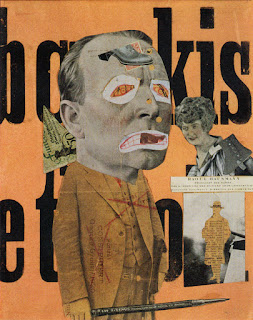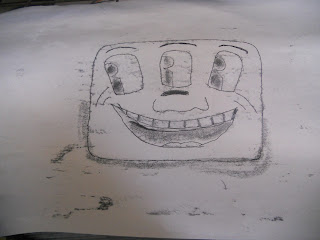Printmaking has been used over the years to create rather interesting and often abstract images. Today we were introduced to print and our objectives were to complete a series of A4 monoprint, use monochromatic and least two other colours and use other materials to create a different effect on the final image.
The process of monoprinting is fairly simple; to print an image onto the paper you first need to either have a picture you want to print or draw an image onto one side of the paper. You would then need to place the paper, image up, onto a surface coated in the ink you have chosen to use. It is important not to touch the paper when it is on the ink because any sections that you do touch will show the black ink through and this will ruin the image. You then need to draw over the linesof the image you have which will pick up the ink on the other side. The more pressure you put onto the pen or object you are using to go over the line, the darker the ink will appear. We used different objects- biro pens, pencils, graphite sticks and even just fingers to apply pressure.
We used primary colours in our printwork and i think this aids the design of the image especially as the artist work i have used by Keith Haring is very similar in both colours and style. Instead of using the colour from the ink i did one print with a background coloured from tissue paper and brown paper and then applied a black ink outline of an image on top. I thought about the style of the background so that it would fit in with the artist's work; i used an orange square of tissue paper and a dark border which is often a favorite style of Harings.
Overall, i enjoyed printmaking and the effect it has on images because i think it is more appealing to the eye and it encourages depth into the image. I found the process easy to do and i experimented with a use of different materials which made it even more interesting. Some prints worked better than others, but the ones that did came out really well and i also attempted to mix colours such as red and yellow to create an orange. This effect was interesting but also effective because it allowed you to just use primary colours to create new colours.
























